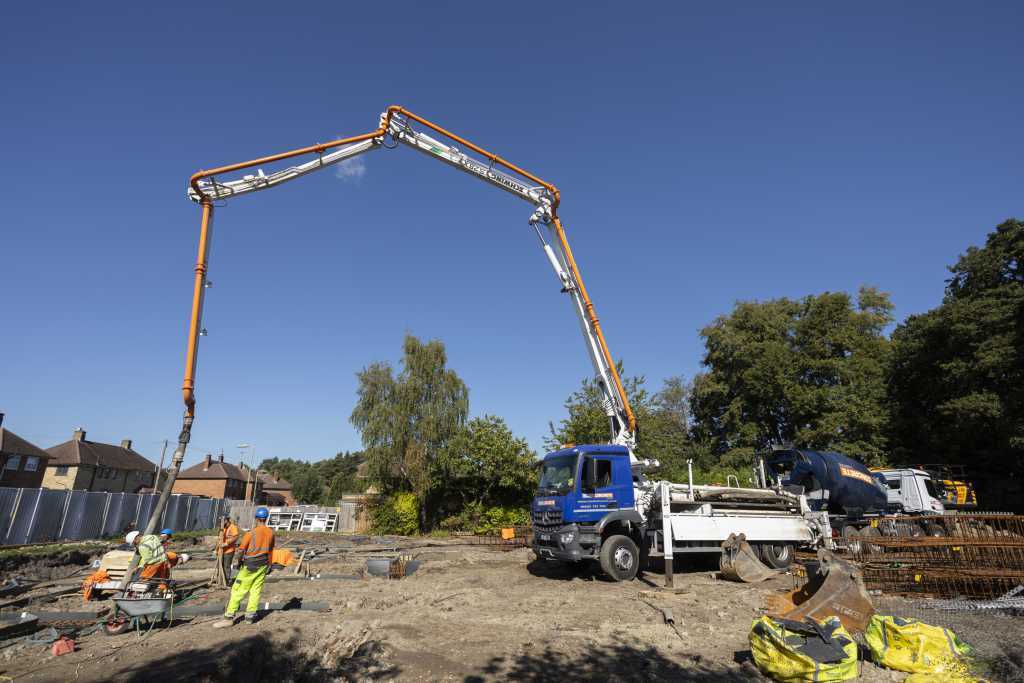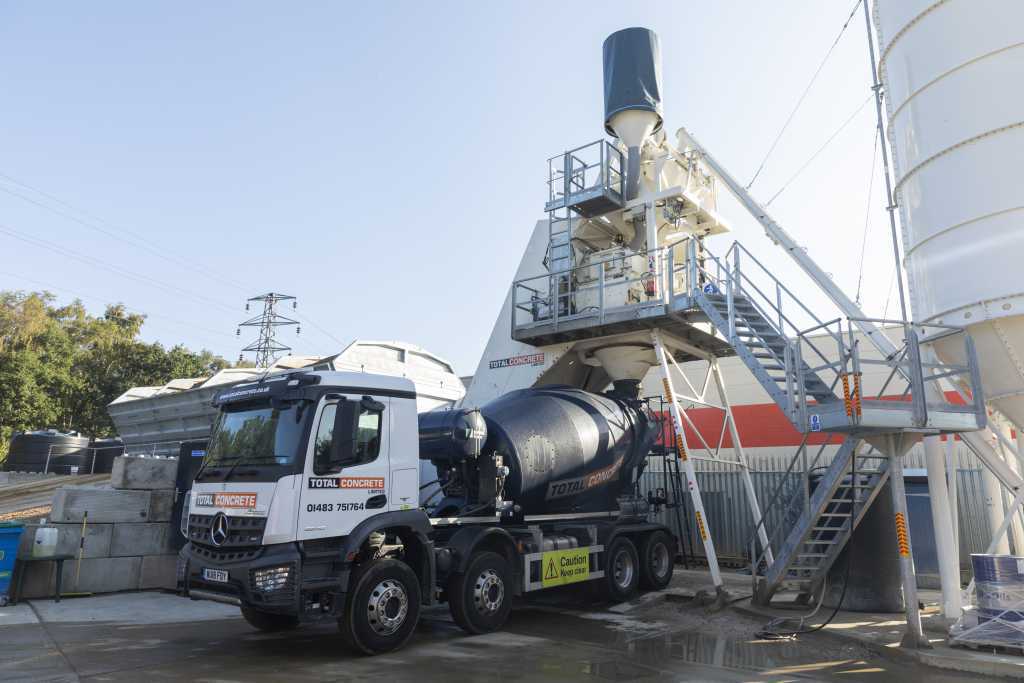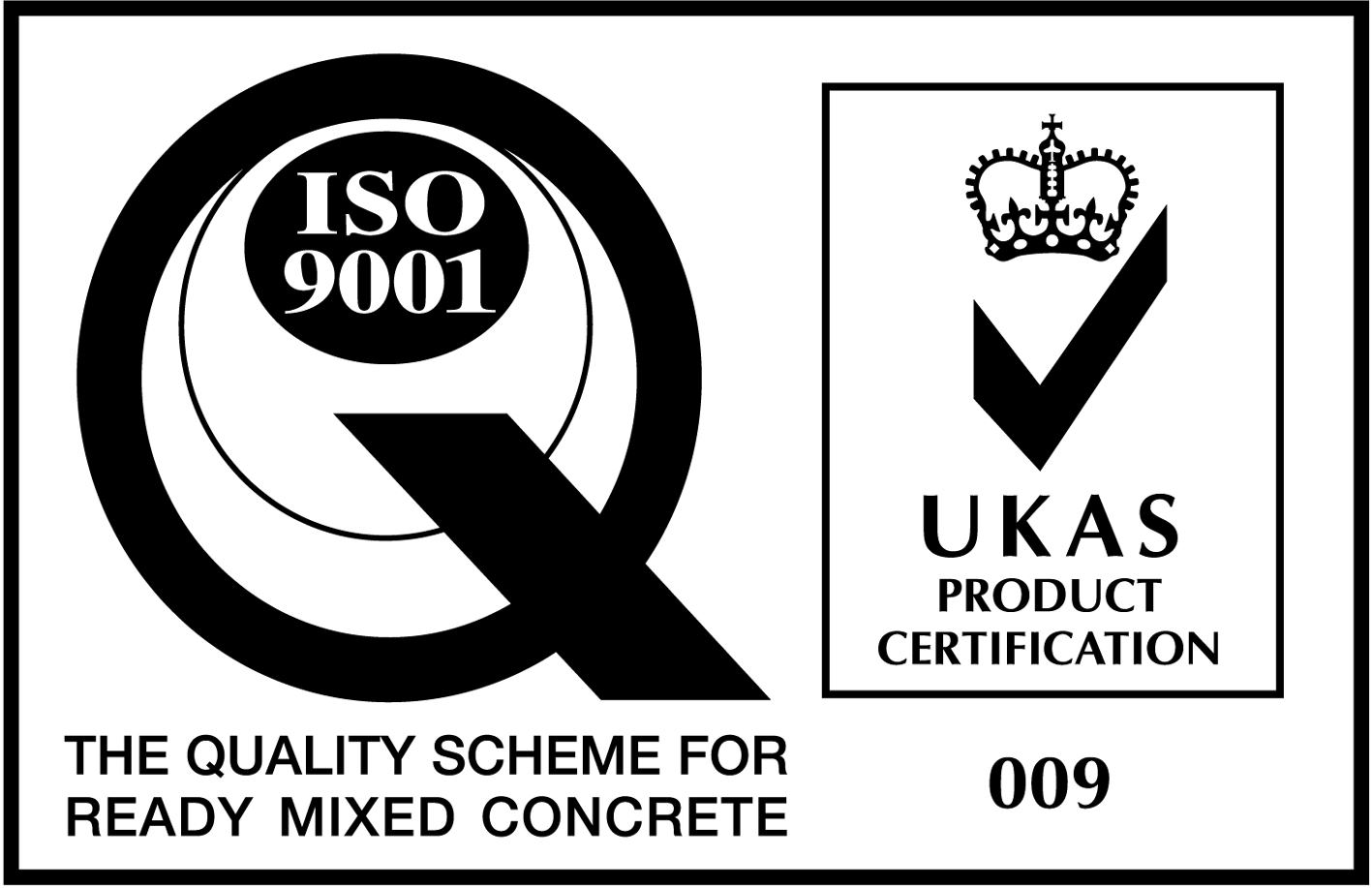What’s The Difference Between A Concrete Pump And A Concrete Mixer?
They’re both key tools in a construction project, helping to make a job quicker, our measurements more accurate and our processes tidier, but to the uninitiated, the difference between concrete pumps and mixers can be difficult to identify. That’s why the team at Total Concrete have written this article explaining the two types of equipment.
Concrete pump

Concrete pumps are designed to move concrete to a specific location quickly, with minimal mess. There are two types of concrete pumps that are used: ground pumps and boom pumps. The former, as the name suggests, transports concrete from the mixer truck along pipes that lay on the floor -the pipes easily fit together and can reach up to 100m if required, it can fit through tight spaces that would otherwise be difficult or impossible to pass through with a wheelbarrow.
Boom pumps use a hydraulic arm to transport concrete up and over obstacles. These are used when concrete is needed on higher levels or to reach up – a tower block, for example – or when concrete is needed behind a row of terraced houses, where even a ground pump cannot help. The boom pump can extend up and over a house, then back
down into the garden to deliver the concrete to exactly where it’s needed.
Both types of pump allow for precise and accurate measurement and delivery of concrete – no risk of being left with excess or too little concrete.
Concrete mixer

Concrete mixers are where all the components of the concrete batch are mixed together: water, aggregates and cement are added in specific quantities to ensure that the batch meets the requirements of the client and the project at hand. There are two types of concrete mixer used in the industry: barrel mixers and volumetric mixers.
Depending on the type of concrete being used, it is either pre-mixed at a batching plant or mixed on-site: for the former, also known as drum-mixed, the exact quantity, grade and type of concrete is created, ready to be used once it arrives on site. For the latter, known as volumetric or on-site mixed concrete, the mix is created at the project site, which means that it can be altered on the go, which accommodates for any last minute changes in circumstance, such as the weather conditions or a change in the amount required.
Concrete mixers are crucial parts of a construction project, and knowing the difference between the two types can help you make the right choice when you need to. For more information about Total Concrete’s concrete mixing services, please get in touch with us today.
 Trade Zone
Trade Zone
